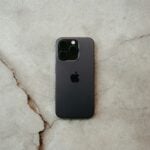Dealing with an iPhone that has a green tint after water damage can be frustrating. This issue often happens if your iPhone was recently exposed to water or dropped. A green screen may mean a serious problem with your device’s hardware.
If you’ve noticed a green hue, there might be internal damage. You might have tried restarting your phone. Sometimes, a force restart is necessary. It’s crucial to address the issue quickly to prevent further harm to your iPhone.
Fixing a green screen due to water damage can be tough. It’s important to know the steps to diagnose and solve the issue. This guide will walk you through what you need to do if your iPhone screen turns green after water exposure.
🧠 What Causes the Green Tint After Water Damage
When water enters your iPhone, it can affect the display connectors, backlight, and internal circuits. This disrupts how colors are rendered, leading to a green hue or fully green screen.
According to SimplyMac and Carl iPhone, the tint appears because:
- Moisture corrodes the display connector or logic board.
- Short circuits occur in the display backlight or OLED panel.
- Pixel distortion alters color output.
⚠️ Signs of Water Damage Beyond the Green Tint
If your iPhone has a green-tinted screen, check for these additional symptoms:
- Flickering or ghosting on the display
- Touchscreen lag or unresponsiveness
- Speaker or microphone distortion
- Overheating
- “Liquid detected” alert when charging
- Fog under the camera lens
These indicate that moisture has reached deeper components.
🧰 Step-by-Step: What to Do Immediately
1. Turn Off Your iPhone
Prevent short-circuiting by powering down the device right away.
2. Remove Accessories
Take off the case, SIM card, and unplug any cables.
3. Dry the Exterior
Pat the phone gently with a lint-free cloth. Avoid shaking or blowing into ports.
4. Do NOT Use Heat
Avoid hair dryers or ovens — they can worsen internal damage.
5. Use Desiccants (Not Rice)
Place your iPhone in a sealed bag with silica gel packets for 24–48 hours.
Rice is less effective and can introduce dust.
6. Check the Liquid Contact Indicator (LCI)
Use a SIM eject tool to remove the tray and inspect the small white/red strip inside.
- White = no water contact
- Red = water damage detected
🔧 Fixing the Green Tint
If the screen still shows a green hue after drying:
- Force Restart Your iPhone
- iPhone 8 or later: Press and quickly release Volume Up, then Volume Down, then hold Power until the Apple logo appears.
- Update or Restore via iTunes/Finder
Sometimes, display glitches are software-related. Update iOS or restore the device in recovery mode. - Try DFU Mode Restore
This performs a deep firmware reset that can fix display driver issues (if not hardware-related). - Professional Repair
If the tint remains, the display assembly or logic board likely needs replacement.
Visit an Apple Store or certified technician — water damage is not covered under standard warranty, but AppleCare+ with accidental damage protection may reduce repair costs.
🧯 Preventing Future Water Damage
- Use a waterproof case (IP68-rated).
- Avoid charging your phone when wet.
- Keep it out of saunas, steam rooms, or rain exposure.
- Regularly back up data to iCloud or your computer.
💡 Key Takeaway
A green tint after water exposure is a strong indicator of internal damage — often to the display or logic board. Immediate drying and professional inspection are crucial to prevent permanent failure.
Sources:
- SimplyMac – iPhone Screen Turned Green After Dropping It In Water
- Carl iPhone – iPhone Screen Green Tint Water Damage
- MacObserver – iPhone Green Screen of Death Fix
Key Takeaways
- Green tint on iPhone often points to internal damage.
- A force restart can sometimes fix the green screen issue.
- Quick action is needed to prevent further damage.
Diagnosing iPhone Green Tint Issues Related to Water Damage
When an iPhone shows a green tint after contact with water, determining the cause and finding a solution quickly is key. This section will discuss how to recognize liquid damage, immediate actions to take, potential software issues, and hardware considerations for affected devices.
Understanding iPhone Liquid Damage
iPhones have measures to handle liquids but are not completely waterproof. Water-resistant iPhones (like iPhone X and later) can resist some exposure. Still, water can enter the device, causing problems. The Liquid Contact Indicator (LCI) helps check for water damage. It is usually inside the SIM card slot and turns red when wet. Always handle water-exposed phones with care to avoid further damage.
Identifying Symptoms and Immediate Actions
Green-tinted screens often follow water exposure. Other signs include flickering, unresponsive display, or the device not powering on. If the phone is still on, turn it off. Remove any case and dry the phone with a soft cloth. Do not use heat or blow dryers. Keeping the phone in a dry place with desiccants, like silica gel packets or rice, may help absorb moisture. Immediate action is essential to minimize further damage.
Troubleshooting Software-Related Problems
Sometimes, software issues cause the screen to show a green tint. Try restarting the phone. On iPhone 6s and earlier, hold the Power and Home buttons until the Apple logo appears. For iPhone 7 and 7 Plus, hold the Volume Down and Power buttons. For iPhone 8 and newer, quickly press Volume Up, then Volume Down, then hold the Side button. Check for iOS updates in Settings. Update iOS if needed. Also, ensure display settings like True Tone, Night Shift, and Auto-Brightness are properly set.
Hardware Considerations After Liquid Exposure
If software fixes do not work, the issue may be hardware-related. Water can damage internal components, which might need professional repair. For older models, like iPhone 6s, replacing the screen might help. For newer models, if the green tint persists, seek help from an Apple Authorized Service Provider. They can diagnose and offer repair options. Sometimes, replacing the phone is more cost-effective, especially for older models. Always consider the cost of repairs and the age of the device when making decisions.







